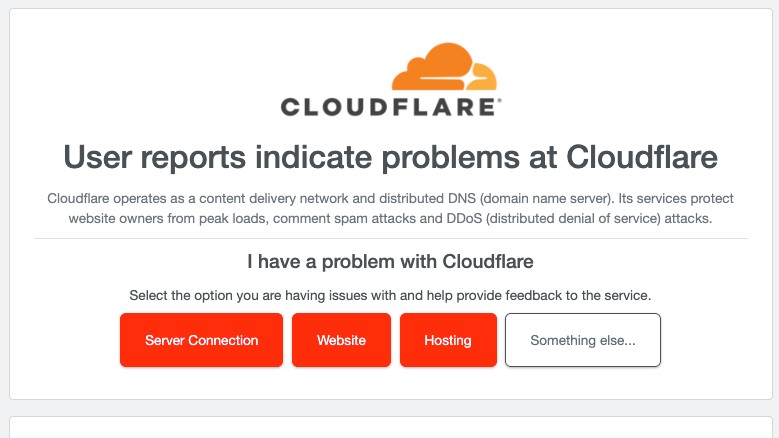A massive internet disruption hit the global web on Tuesday, as a critical outage at Cloudflare, a major American provider of digital infrastructure services, caused widespread failures across countless websites and online services. Platforms as significant as X (formerly Twitter), OpenAI’s ChatGPT, and Canva were rendered inaccessible for large user bases across the globe, underscoring the centralized and fragile nature of the modern internet.

The trouble began earlier in the day, with reports surging on outage-tracking sites, ironically, some of which were also temporarily affected, showing a dramatic spike in service problems. Users attempting to access affected platforms were met with generic messages indicating an “internal server error on Cloudflare’s network” or the ominous “widespread 500 errors.”
The Ripple Effect of a Single Point of Failure
Cloudflare is a cornerstone of the internet’s backbone, offering Content Delivery Network (CDN), DDoS mitigation, and security services for millions of websites, effectively sitting as a crucial buffer between sites and their end-users. Any malfunction in its extensive network means the digital world holds its breath.
The outage had a cascading effect on its customers worldwide. Major platforms like the social media giant X, the generative AI tool ChatGPT, the design platform Canva, and even streaming service Spotify were among the most notable sites experiencing significant downtime. Reports of issues poured in from regions spanning the UK, US, Europe, and Asia.
Cloudflare outage list: X, OpenAI, Canva, Spotify, more possibly impacted
- YouTube
- Amazon Web Services
- Archive of Our Own
- Canva
- Depop
- Doordash
- Downdetector
- Grindr
- League of Legends
- Letterboxd
- OpenAI
- ChatGPT
- Grindr
- Uber
- Claude
- Spotify
- X (Twitter)
Company Responds, Investigates Root Cause
The American company acknowledged the problem quickly, though the scale of the disruption appeared to impact even its internal reporting tools.
In an initial statement on its system status page, Cloudflare confirmed the severity of the incident. “Cloudflare is aware of, and investigating an issue which impacts multiple customers: Widespread 500 errors, Cloudflare Dashboard and API also failing. We are working to understand the full impact and mitigate this problem. More updates to follow shortly,” the company stated.
As engineers worked frantically to address the issue, updates from the company confirmed they had identified the problem and were implementing a fix. Later updates indicated services were beginning to recover, though a full return to normal was still ongoing. “We are seeing services recover, but customers may continue to observe higher-than-normal error rates as we continue remediation efforts,” read a subsequent update.
Growing Concerns Over Internet Centralization
While the precise root cause of the Cloudflare failure remains under investigation—with the company noting an “unusual spike in traffic” to one of its services, the incident highlights a persistent concern within the tech community.
The disruption comes just weeks after a major outage at Amazon Web Services (AWS) caused similar chaos across a vast number of websites. These repeated, large-scale failures at essential infrastructure providers have led to renewed public scrutiny and debate over the reliance on a handful of centralized companies to run such a large portion of the global internet. When a single “gatekeeper,” as experts have described Cloudflare, experiences a problem, the disruption swiftly and broadly impacts global connectivity and commerce.
Cloudflare has assured its customers that there is no evidence of a security breach and that user data remains safe. As services continue to stabilize globally, the company’s full post-mortem on the outage will be highly anticipated by the web services industry and millions of affected users alike.








